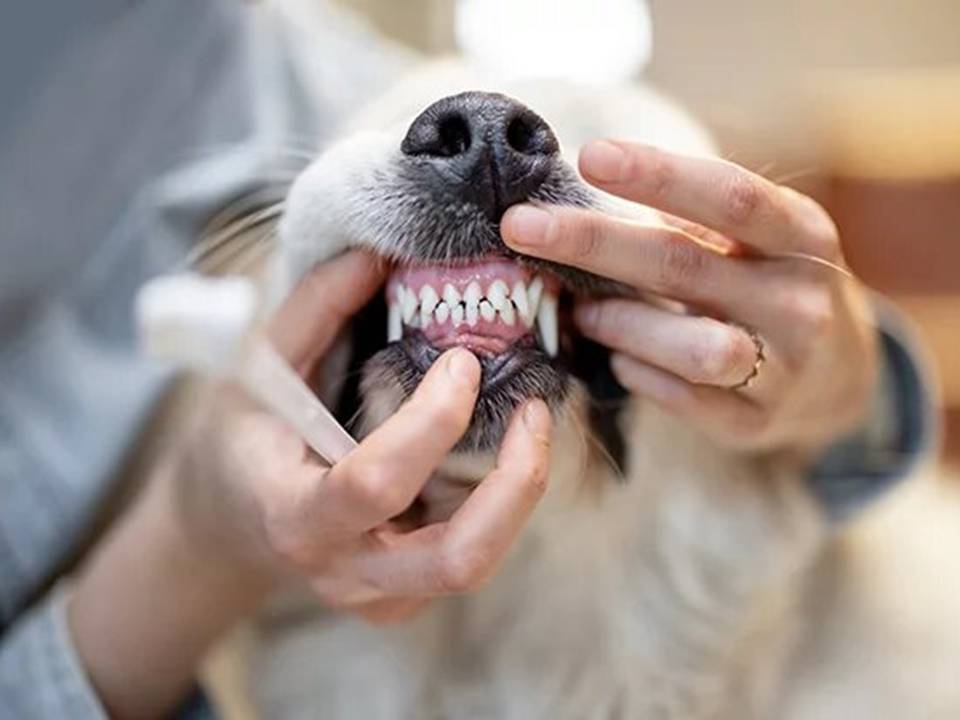Improve your Dog’s Quality of Life
Dog’s teeth care. Maintaining good dental health is just as crucial for dogs as it is for humans. Proper dental care can prevent a host of health issues, improve your dog’s quality of life, and even extend their lifespan. In this comprehensive guide, we’ll take a closer look at the importance of canine dental health, common dental problems, and effective care practices to ensure your dog’s teeth remain healthy.
The Importance of Dental Health in Dogs
The condition of your dog’s teeth is not only about keeping their breath fresh or avoiding bad smells. Dental health affects your dog’s overall well-being. Just like in humans, dental problems can lead to pain, difficulty eating, and the spread of infection to other parts of the body. Many veterinarians emphasize that dental disease is one of the most common yet preventable health issues in dogs.
A healthy mouth allows your dog to chew properly, which aids digestion and nutrient absorption. But when dental problems arise, your dog may experience pain, inflammation, and even infection, leading to more severe health problems, including heart, liver, and kidney disease. This happens when bacteria from the mouth enter the bloodstream through inflamed gums, eventually affecting vital organs.
Common Dental Problems in Dogs
Several dental issues can affect your dog’s health if not treated or prevented in time. Here are the most common ones:
1. Plaque and Tartar Build-up
Plaque is a sticky film of bacteria that forms on your dog’s teeth after eating. If not regularly removed, it hardens into tartar, which can irritate the gums and lead to more severe dental problems. Tartar can also be a breeding ground for bacteria, contributing to infections in the gums and roots of the teeth.
2. Gingivitis
Gingivitis is inflammation of the gums and is often a result of plaque build-up. Dogs with gingivitis typically have red, swollen gums that may bleed when touched. If left untreated, gingivitis can progress to periodontal disease, which is a more serious and irreversible condition.
3. Periodontal Disease
Periodontal disease is an advanced form of gum disease that affects the structures supporting your dog’s teeth, including the bones and ligaments. Over time, this can result in tooth loss, severe pain, and infection. Dogs with periodontal disease often have foul breath, and visible tartar, and may show signs of discomfort when chewing.
4. Tooth Fractures
Dogs can break their teeth when chewing on hard objects such as bones, antlers, or toys. A fractured tooth exposes the sensitive inner parts of the tooth (the pulp), leading to pain, infection, and potential tooth loss if not treated promptly.
5. Oral Infections and Abscesses
Infections in the mouth can occur when bacteria enter through damaged or decayed teeth. Abscesses, or pockets of infection around the tooth root, can cause significant pain and swelling. Left untreated, these infections can spread, causing serious health complications.
Signs of Dental Problems in Dogs
Recognizing the signs of dental issues in dogs can help you catch problems early. Here are some common symptoms to look out for:
Bad breath: Persistent foul-smelling breath can indicate plaque, tartar build-up, or infection.
Difficulty eating or chewing: If your dog seems to have trouble chewing or avoids certain foods, they may have dental pain.

Pawing at the mouth: Dogs experiencing oral discomfort may paw at their mouth or face.
Red, swollen, or bleeding gums: These are clear signs of gingivitis or periodontal disease.
Visible tartar: A yellow or brown build-up on your dog’s teeth is a sign of plaque that has hardened into tartar.
Loose or missing teeth: This usually indicates advanced dental disease.
Drooling: Excessive drooling, especially if unusual, may signal dental discomfort.
Preventing Dental Problems in Dogs
Preventative care is the key to maintaining your dog’s dental health. Here are some effective ways to keep their teeth in good condition:
1. Regular Brushing
Brushing your dog’s teeth is one of the best ways to prevent plaque build-up. Use a soft-bristled toothbrush designed for dogs and canine toothpaste (never human toothpaste, as it contains ingredients harmful to dogs). Aim to brush your dog’s teeth daily or at least several times a week. Starting this habit early in your dog’s life can make it easier as they grow older.
2. Dental Chews and Toys
Many dog chews and toys are designed to help clean teeth and massage gums as your dog chews. Look for products approved by the Veterinary Oral Health Council (VOHC), which ensures the item is effective in reducing plaque and tartar build-up.
3. Regular Veterinary Dental Check-ups
Routine dental exams by your vet are essential to catch any developing problems before they become serious. Most vets recommend annual check-ups, but some dogs may need more frequent visits, depending on their dental health. During these check-ups, your vet may also recommend professional cleanings under anaesthesia to remove stubborn tartar and treat any dental issues.
4. Proper Diet
Diet plays an essential role in maintaining dental health. Some dry dog foods are formulated to reduce plaque and tartar. Additionally, some prescription diets are designed specifically to support oral health by promoting chewing and reducing bacteria.
When to See the Vet
If you notice any signs of dental problems in your dog, it’s crucial to consult a veterinarian. Early intervention can prevent more serious issues and save your dog from pain and potential health complications. Dogs are excellent at hiding discomfort, so even subtle changes in behaviour, eating habits, or breath odour should be taken seriously.
In severe cases, your vet may recommend advanced treatments such as dental extractions, root canals, or periodontal therapy. While these procedures might seem daunting, they can significantly improve your dog’s quality of life.
Conclusion
Dental health is an integral part of your dog’s overall well-being. Regular at-home care, including brushing and dental chews, combined with professional vet check-ups, can help prevent dental issues before they become severe. By taking an active role in maintaining your dog’s dental hygiene, you’ll ensure they stay healthy, happy, and pain-free for years to come.






